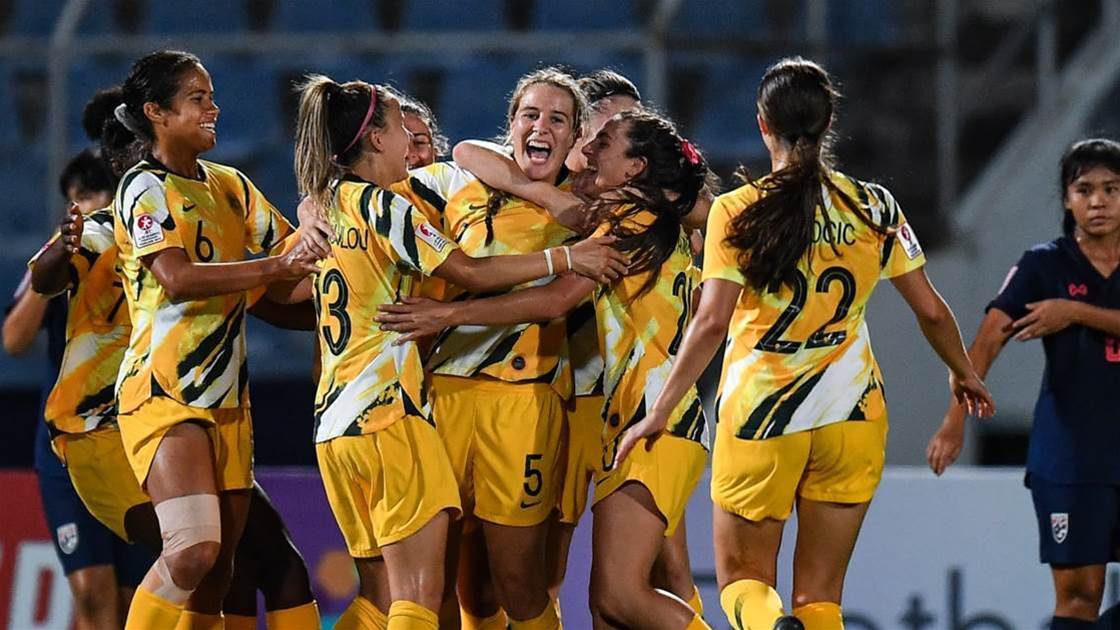After losing 9-1 to South Korea and conceding 21 goals to North Korea, Japan and South Korea in three games, serious questions are being asked about the development of our elite female footballers in Australia.
Since 2002 there has been a Youth (under 19s or 20s) World Cup held every two years. Our country’s best young female talent have not qualified for this tournament since 2006, meaning they will now miss seven in a row after last night’s result.
In that time, our Asian counterparts North Korea have won two (2006 and 2016) whilst Japan won the 2018 edition. When looking at our results in Asia alone, it isn’t much better reading.
Since 2006 when we finished third in the AFC Under 19 championships, our girls have finished no higher than fourth and mostly fifth in seven tournaments with only 11 wins from 29 games.
When it comes to Olympic Games, we came seventh in 2016 after making the quarter-finals. Prior to that we hadn’t qualified since 2004. We have only ever won two matches at an Olympics Games.
These results are a poor reflection of the program we have in place for coaching girls.
The NPLW system was supposed to address these issues, but Former Alamein FC coach Sinisa Cohadzic believes there are some glaring problems that are not easily resolved.

"The whole system is wrong," he says.
"The way they think of developing these players through NTC programs and now emerging Matildas programs is simply wrong. All they teach them there is to play possession football.
“The question is, do they play possession football with purpose?
"Is it effective football?
"Prime example is when a player from the NTC comes to me or any other coach, they do not know what defending is. They do not have the intensity to play the game. All we do is teach them to play possession football.”
The agreement reached between FFA and the PFA ensured 5% of player-generated revenue would be used to help our National Youth teams (boys and girls).
According to Cohadzic, it is now up to FFA and the relevant state authorities to use the available funding and make smart choices to solve the problem.
“These players are picked in state academies because they are already good footballers... let's be realistic and say that if we cannot produce players if intensity wise or by effectiveness, we cannot match other nations,” he said.
“These players need to play with senior players to fix this, it is as simple as that. Especially in an environment where results are actually important and demand intensity and physicality from them.”
Cohadzic’s thoughts are similar to what was identified in the PFA’s pioneering study into the ‘Golden Generation’ of Australian footballers.
The report, which was released late last month, identified how important it was for the golden generation to have a club culture as well as have early exposure to senior football.
“We simply will not be able to produce players given the way we are set up at the Federation level at the moment,” said Cohazic.

“Clubs need to develop these players and academies need to be set up at each club. All Federations need to do is employ scouts and have a mentorship program for the so-called more talented players.
“Get them in once or twice a week and play against a boys group and then let them get back to the clubs to play in a more challenging environment with senior experienced players.
“Invest that money from the new revenue share deal and from the government for emerging Matildas into each NPL club to set up an academy and employ good coaches.”
Related Articles

Four potential Young Matildas we’re hoping to see at the U-20 World Cup

'I felt so out of place': W-League, Young Matildas star reveals racist abuse













